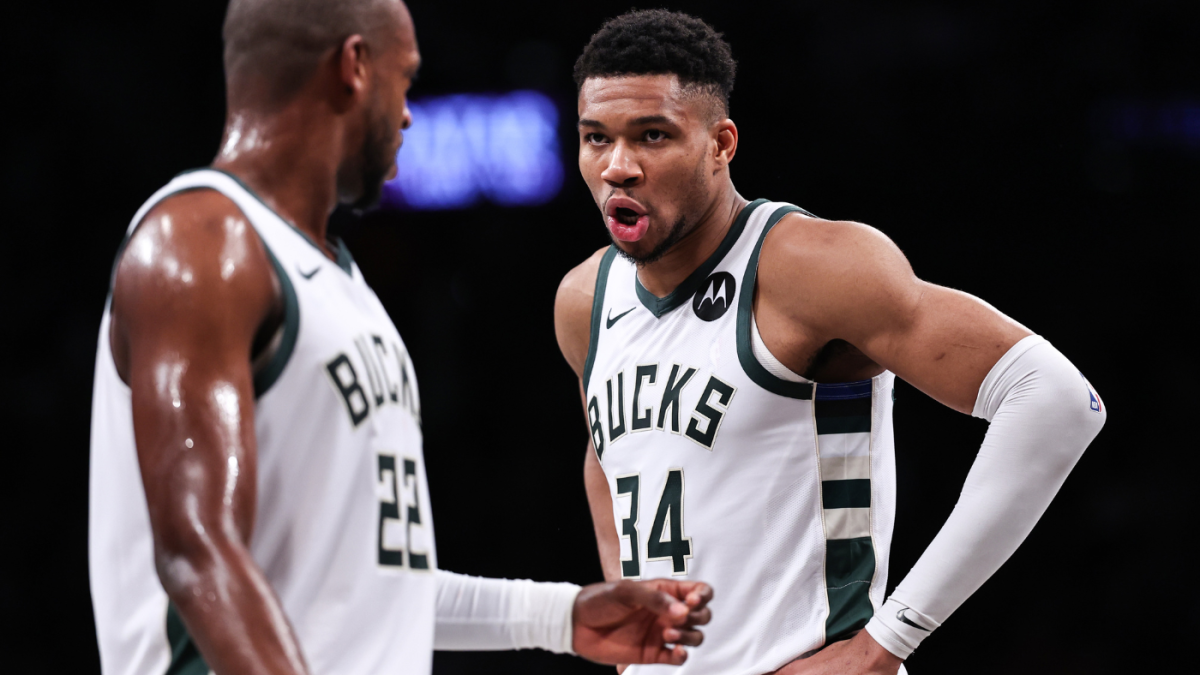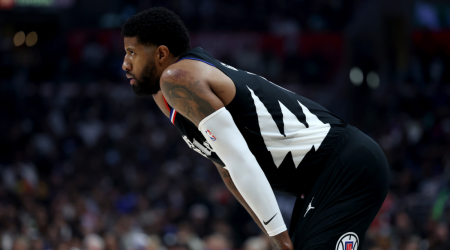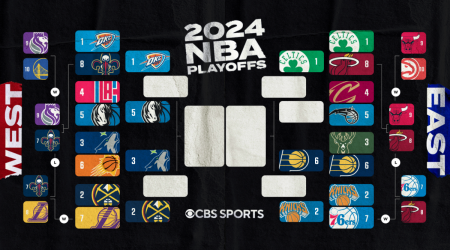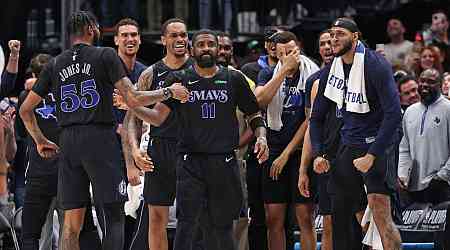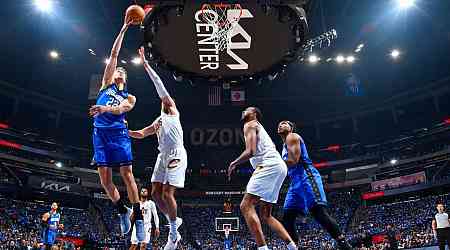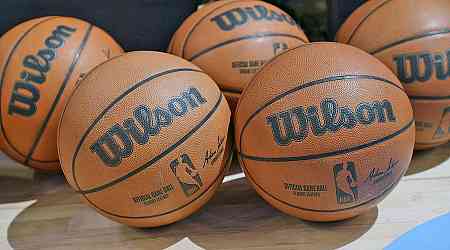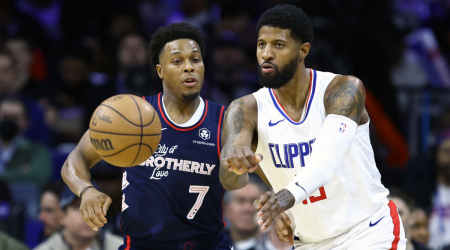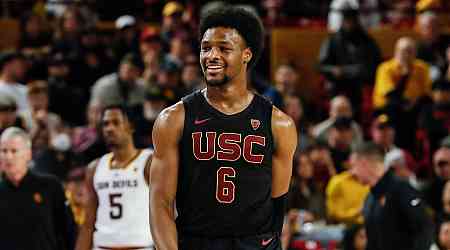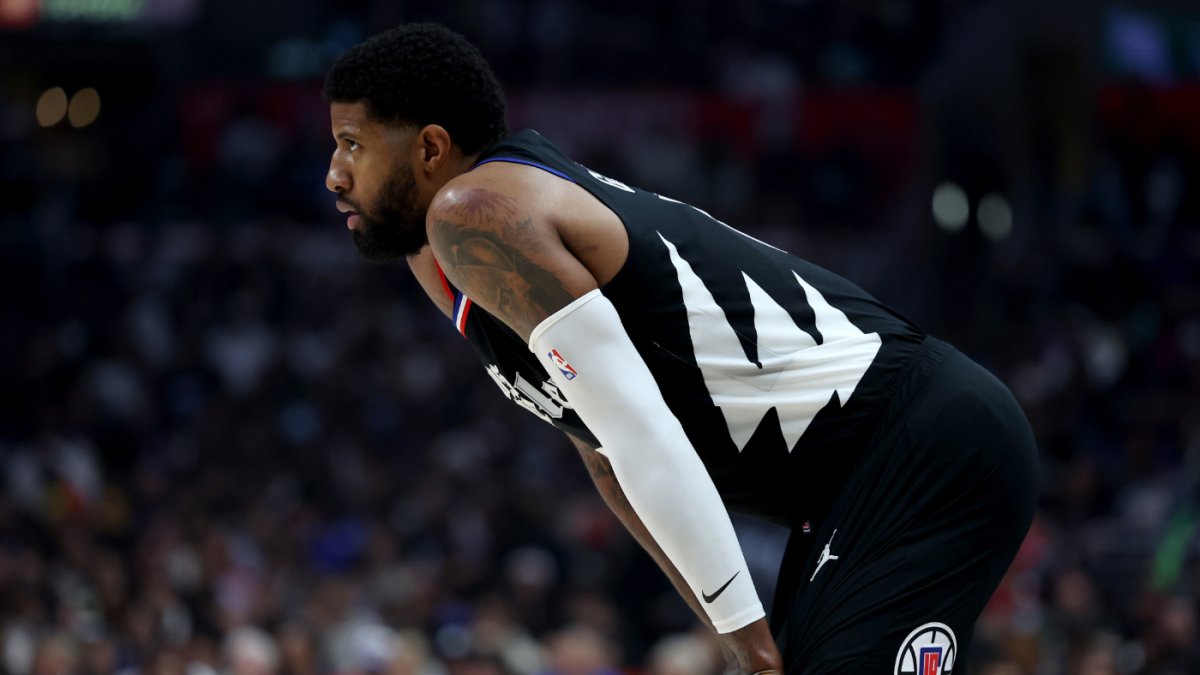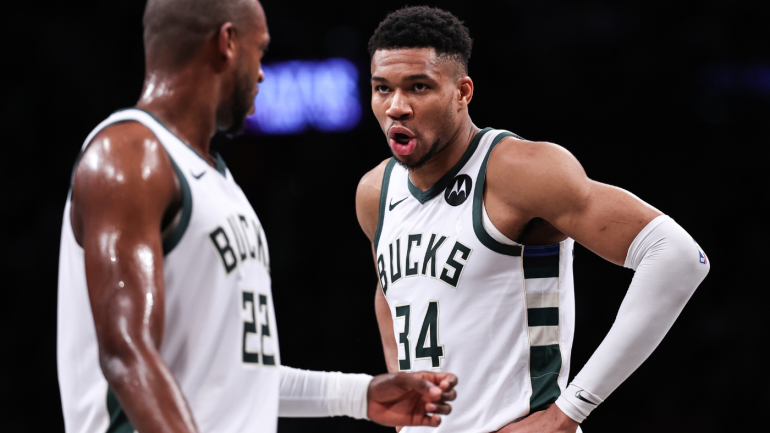
The NBA's regular season, especially in the load-management era, is largely defined by depth. Teams need as many playable options as possible with the expectation that almost everyone is going to miss time at some point.
The playoffs tend to be more streamlined. In the wise words of Pat Riley, teams should "use eight, rotate seven, play six and trust five." The deeper into the playoffs teams go, the truer this axiom tends to prove. Teams typically open series, particularly in the early rounds, with eight or nine players earning minutes. By Game 7? Six or seven see the court. Five do so for extended minutes.
A coach can win or lose a series for his team based on the players that he chooses to use. So with the playoffs now approaching, let's take a look at the lineups that will define the 2024 postseason. We'll start with the East. Keep in mind, we're not binding ourselves to the standings here. Just because we're covering five lineups doesn't mean they all come from top-five seeds. With that in mind, here are the five most important lineups in the Eastern Conference this postseason.
Boston Celtics
- Lineup: Derrick White, Jaylen Brown, Jayson Tatum, Al Horford, Kristaps Porzingis
- Total possessions: 242
- Net rating: +19.6
Picking a lineup for Boston is almost impossible because basically every unit they actually use is dominant. The Celtics have used eight different lineups for at least 100 total possessions. Seven of them have net ratings of at least +10, according to Cleaning the Glass. The eighth, which is simply their starting lineup with Al Horford in place of Kristaps Porzingis, is the lone exception, but as it was mostly a way of providing Porzingis rest during back-to-backs, it probably isn't going to come up much this postseason. The Celtics have eight players that have played at least 1,000 minutes this season. All eight of them rank in the top 16 in the NBA in terms of individual plus-minus. Every five-man combination the Celtics use works.
So how did we settle on the lineup above? Well... think about the teams that are likeliest to threaten Boston in the postseason. The Nuggets in a possible Finals matchup stand out. The Bucks are the No. 2 seed in the East currently. The Celtics seem to run into the 76ers at some point almost every year. The commonality here is size. Nikola Jokic, Giannis Antetokounmpo and Joel Embiid are three of the very few roadblocks the Celtics might have to overcome to win the championship.
Boston isn't going to change its starting five to open any series, but if any of those teams draw first blood? This is Boston's adjustment. Horford has been Embiid's kryptonite for years. He was essential against Milwaukee in 2022, and while there's no good answer to Jokic in basketball, Horford is among the better options that exists. Boston's big adjustment in the last two games against Philadelphia a season ago was to go big and start Horford and Robert Williams together. Should the need for an adjustment arise, that is likely the play this time around as well.
Milwaukee Bucks
- Lineup: Damian Lillard, Malik Beasley, Khris Middleton, Giannis Antetokounmpo, Brook Lopez
- Total possessions: 1,286
- Net rating: +15.5
If you're looking for a reason to maintain any Bucks optimism, here it is: Milwaukee has used four lineups for at least 200 possessions this season. All of them have net ratings above +13. The groups that Milwaukee relies on regularly have played quite well this season. It's basically every other lineup that has dragged the Bucks down. If you're wondering how true that has been during the largely disappointing Doc Rivers era, the starting lineup we're covering here has won its 114 minutes under Rivers by 36 total points.
This group's flaws are obvious. They can't defend the point of attack. They're more or less married to drop-coverage, especially since the P.J. Tucker-less roster of the past few seasons has lost the ability to credibly switch. Rivers has forced the issue on the Lillard-Antetokounmpo pick-and-roll more, but the results have been inconsistent. Middleton's health has played a major role in those issues. Remember, he was the primary shot-creator on the 2021 championship team. The Bucks look a whole lot scarier when the healthy version of him gets to work off of Lillard and Antetokounmpo, especially with Beasley's shooting in the fold now.
Milwaukee's starters aren't stopping the Celtics, but as the Bucks learned the last time they faced Boston in the playoffs, the Celtics are especially vulnerable to shooting variance. If Boston's 3's aren't falling, the Bucks are going to get a lot of mileage out of the easy points Antetokounmpo generates out of this maxed out spacing. That's Milwaukee's path to victory against Boston. It's slim, but it exists.
Orlando Magic
- Lineup: Any combination of Jalen Suggs and Jonathan Isaac
- Total possessions: 294
- Net rating: +10.5
We're cheating a little bit because context demands it. Jonathan Isaac has been a 15-minute player all season because of health concerns. He comes off of the bench and his minutes rarely align with Suggs' for several reasons. Most notably, their track records suggest spacing issues could arise by playing them together. As such, Orlando hasn't really found a five-man unit for these two yet. No group featuring both has played more than 51 possessions this season. That's going to change in the playoffs.
We're dealing with small samples here, but Isaac is shooting a shade above 49% on 3-pointers during the calendar year of 2024. Suggs, after shooting roughly 27% in his first two seasons, is hovering around 40% this season. Take those numbers with a grain of salt, especially since the Magic lack the sort of traditional pick-and-roll playmaker that could spray passes to them if defenses leave them alone, but those are acceptable enough offers. They can make open shots.
That's all they'll need to do, because these two are a defensive cheat code. Magic lineups featuring both rank in the 96th percentile league-wide in terms of defensive efficiency, and it's not hard to tell why. Suggs might be the best defensive guard in the NBA. Isaac might be the best defensive player in the NBA. Point-of-attack defense becomes significantly more valuable in the playoffs, when top opposing guards eat up more usage than usual. Good luck scoring when Suggs is funneling you into Isaac at the rim. Playoff basketball frequently devolves into rock fights. These two equip Orlando for that kind of basketball better than any other Eastern Conference duo.
Cleveland Cavaliers
- Lineup: Donovan Mitchell, Max Strus, Isaac Okoro, Dean Wade, Jarrett Allen
- Total possessions: 484
- Net rating: +20.7
The obvious caveat here is that Dean Wade hasn't played since March 8, and while he's been listed as day-to-day, the Cavaliers haven't offered much clarity on when he'll be back on the floor. The broader point, though, is that this concept is largely what powered Cleveland's midseason 18-1 surge. Mitchell was the primary ball-handler. Allen was the lone big man. Shooting and defense surrounded them.
This isn't to say that Cleveland should bench Darius Garland and Evan Mobley in the playoffs. It does, however, raise the age-old question of talent vs. fit. The Cavaliers had an identity when injuries forced them to find one. They haven't been able to hold onto it since. The stakes here are enormous. Mitchell is openly deflecting questions about his future. Who knows how safe J.B. Bickerstaff is if Cleveland flames out in the first round again.
All of those questions create a sort of "now-or-never" aura to this Cleveland playoff run. The Cavs will almost certainly open the postseason conventionally, with Garland and Mobley not only starting, but playing the majority of games. Eventually, the Cavaliers are going to get pushed into a corner, and when that happens, we're going to learn a whole lot about this team's future when we know how far back toward the "fit" end of the spectrum they're willing to slide.
Philadelphia 76ers
- Lineup: Tyrese Maxey, Kyle Lowry, Kelly Oubre, Nic Batum, Joel Embiid
- Total possessions: 57
- Net rating: +19.3
Philadelphia's past playoff lineups had a bit of a rigidity problem. Opponents would figure out their basic approach as a series progressed, and because their system was so devoted to 3-and-D players waiting around for shots to be created, Philadelphia lacked the ability to respond on the fly. The James Harden-Joel Embiid pick-and-roll typified that simplicity. When so many of them resulted in the same pocket passes into mid-range jumpers, teams eventually figured out exactly how to slow them down.
Philadelphia has stumbled into a different sort of starting lineup since Embiid returned last week. Maxey's pick-and-roll chemistry with Embiid is far more varied thanks to his greater speed, but pairing them with not only another point guard in Kyle Lowry but another point forward in Nic Batum offers far greater creativity in the moment. Everyone in this unit can handle the ball. Four out of the five are either elite scorers or high-end passers. This is a unit of problem-solvers.
That's something the 76ers of the past few seasons haven't really had, and it doesn't come without a price. Lowry is too old to serve as a primary point-of-attack defender, for instance, and any hopes of a Tobias Harris revival are muted with him on the bench. But the reality of competing with a team like Boston is that conventional probably won't cut it. The Celtics' top-end talent is simply stronger than Philadelphia's. The 76ers have to be able to attack them with high-IQ players that can put their superstars in the best possible position to succeed. This is their chance at doing that.


















